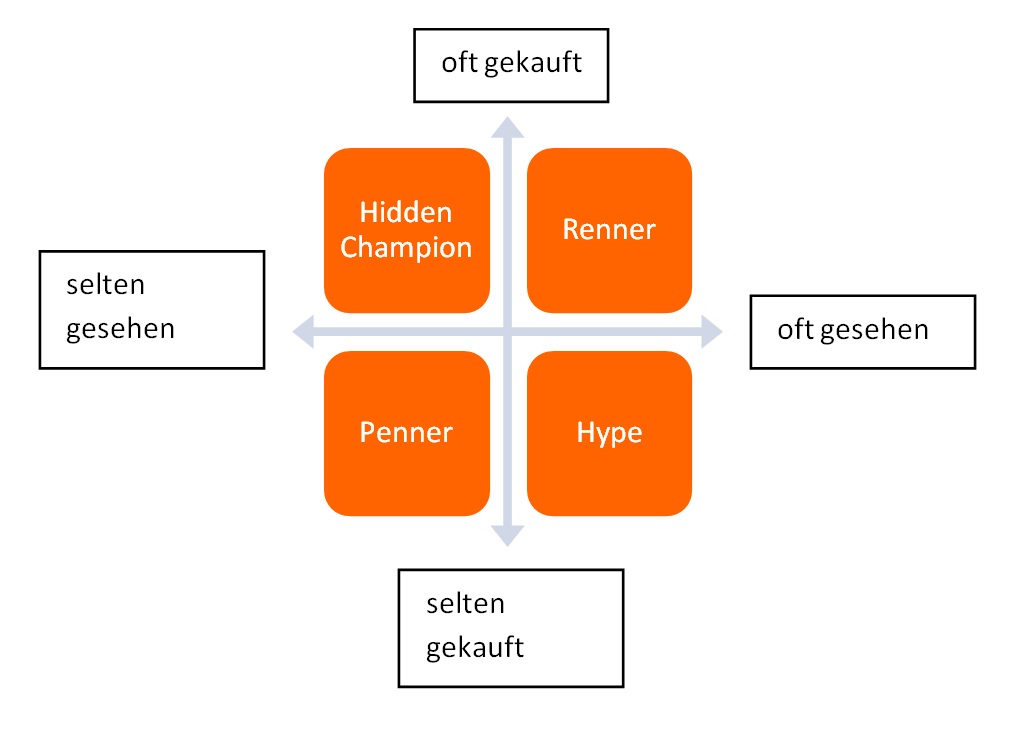Quick wins with web analytics
by Katrin Nebermann
Web analytics can be used to collect a lot of data from an online store. This variety of data is often not nearly fully utilized due to its high complexity. But even with little effort, you can collect a lot of important information and then optimize your store. With the following six tips, we give you the opportunity to achieve quick success without great effort.
Tip #1 – Identify pages/types with a high bounce rate
The bounce rate indicates the percentage of visitors who only see a single page and then jump off again. Since Bouncer have already opened the page, one can assume a fundamental interest in the store. And This means that they could be potential buyers, registrants, etc. To potential, it is important not to lose the bouncers. understand. You should consider the following aspects.
Which entry pages have the highest bounce rate?
The “Pages” report can be used to find out on which entry pages most visitors bounce directly. Here the pages can be sorted according to the key figure “Entries” and thus the bounce rate of the top entry pages can be viewed. You can then create hypotheses as to why the bounce rate on the individual pages could be particularly high. For example, it could be that visitors are not shown the relevant information or not enough information. These hypotheses can then be tested. Ultimately, you can optimize the relevant pages and thus reduce the bounce rate.
Tip #2 – Know the differences between new and returning visitors
With the help of cookies, etracker measures whether a visitor has visited a website before or whether they are a new visitor. It is important to ensure that returning visitors can only be recognized if the cookies are not deleted. This means that the figures are not exact, but they do help to identify a trend.
Are there any noticeable differences in the use of content (pages)?
In order to use the new and to better understand returning visitors, it is helpful to to analyze the pages accessed. The relevant Information can be found in the “Month & Year” report via the segments “Visitor acquisition” and “Page name”. It can therefore to find out, for example, whether new customers prefer information pages and returning customers can view the product detail pages directly. You can then analyze why new customers are not signing up. move towards product detail pages. Accordingly, the information pages go into more detail about products or to navigate these.
Is the commitment of the two groups different?
Furthermore some engagement metrics are analyzed to distinguish the two groups understand better. These include, among other things, the length of stay, the Visitor frequency and page impressions per visit. This means that For example, it can be investigated whether the returnees are more committed than new visitors and whether the probability of buying is higher or lower. is lower.
Tip #3 – Identify and expand channels with many sales
About the report “Medium” can be used in etracker to determine via which channels the Visitors come. For example, do most visitors come via SEO or via social media? In this context, the key figure “Orders” to analyze which channel is used for the most sales are generated. In addition to the classic channels, the report “Referrer (organic)” can be used to find out via which external pages, e.g. forums. You should then the traffic channels and referrers through which many sales are generated will continue to expand. You can also analyze the sales of the individual media to find out whether your Marketing measures pay off. For example, spend a lot of money on social media advertising and generate only little revenue via this channel. sales, you should go deeper into the analysis and analyze the social Rethink media advertising.
Tip #4 – Analysis of abandoned shopping carts
etracker offers the possibility, for example, to create order processes as website target processes. measure. This means that all individual steps of the ordering process be analyzed. This analysis helps to identify problems in the ordering process to uncover. In the “Website goals” report, you can evaluate in which steps and how many visitors dropped out. Have to For example, many visitors abandoned the site when selecting payment methods, you should consider whether you want to add further payment methods to your store. offer.
Tip #5 – Place products in the right place in the store
With etracker you can find out how individual products or product categories perform. Products can be categorized in a product matrix:

The Hidden Champion products should be placed on pages with a lot of traffic, so that even more sales can be generated with them. The Product detail pages of poorly converting products (hype products) should be optimized in order to increase conversion. optimize. In order to optimize the performance of the different product detail pages can be determined with the help of the etracker Optimizers A/B tests can be carried out. For example, you can use the old or original variant, a variant A with shortened Compare product descriptions. You can then check which variant converts better.
Tip #6 – Find new content through the internal search
Through the Evaluation of the internal search, you can find out which search terms that visitors have searched for. In this context whether there are any results for the searched terms or whether the search did not return any results. So if you find that many visitors search for the same term, but no result for it you should consider creating content for this or creating new content. products to the range. Because there seems to be an interest to be.


